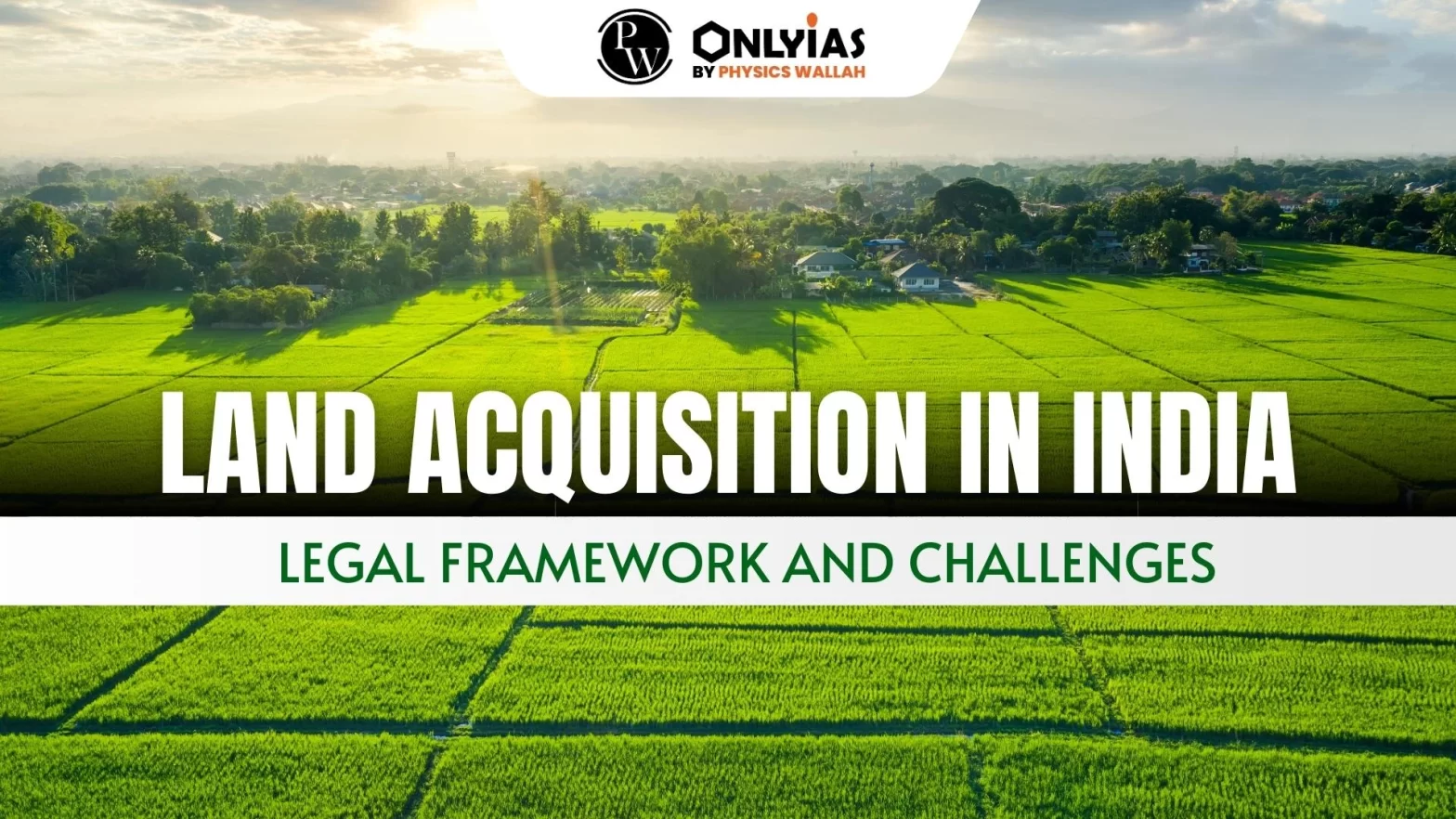Context:
| Relevancy for Prelims: Land Acquisition, SVAMITVA scheme and Special Economic Zones.
Relevancy for Mains: Land Acquisition in India, associated challenges and measures that need to tackle it. |
Land Acquisition: It is the process by which the government acquires private property for public purpose without the consent of the land-owner.
Why is land acquisition in India needed?
- Land is a Scarce Resource: India holds only 2.4% of total land surface but hosts more than 18% of the world population.
- Urban Expansion and Housing: By 2050, India is likely to have 850-900 million people living in urban spaces. As cities expand and populations grow, land acquisition becomes essential.
- Economic Growth: Land is required for establishing industries, manufacturing units, etc.
- Energy Projects: Land acquisition is essential for the development of power plants, renewable energy projects, and other energy-related initiatives such as the Tehri Dam in Uttarakhand, Sardar Sarovar Dam in Gujarat, etc.
The Right to Fair Compensation and Transparency in Land Acquisition, Rehabilitation and Resettlement (RFCT-LARR) Act, 2013
- In India, land acquisition is governed by this act and focuses on providing compensation to the land owners, extending rehabilitation and resettlement benefits to livelihood losers.
- Mandatory: 70% consent for Public Private Partnership (PPP) projects, 80% consent for private projects and Social impact assessment (SIA) for every project.
- Compensation: 4 times the market rate in rural areas and 2 times in urban areas.
|
Know more about Land Acquisition in India – Arbitral Tribunal Verdict on Singur Land Acquisition Case
What are the challenges of land acquisition in India?
- Lack of Support to Private Firms: Private firms need to strike their own bargains with multiple owners which makes them vulnerable to ransom demands.
- Eminent Domain: State’s power to acquire private property against the consent of the owner for a ‘public purpose’. Under a valid law, the land owner must be paid just compensation and the acquisition of the property should only be for public purposes.
- Land Deprivation: Land ownership and control have been central to India’s social structure and have been a source of power, wealth, and social status.
- Social Disorder: The process of land acquisition is often followed by protests and agitation due to multiple reasons ranging from environmental to political concern, often turning violent like the Narmada Bachao Andolan (NBA).
- Overlapping Jurisdiction: Though land is a state subject, “acquisition and requisitioning of property” lies in the concurrent list.
- Politicization of Issue: Land acquisition issues are often exploited for political gain.
- Ideological Clash: Land ownership has been a source of ideological conflict between capitalism and communism.
- Misuse of “Public Purpose”: This term is vague and ambiguous.
Way Forward
- Digitalisation and Modernisation of land records such as SVAMITVA scheme.
- Taking the Middle Path: Ensuring the twin objectives of farmer welfare along with expeditiously meeting the strategic and developmental needs of the country are fulfilled.
- Promotion of Special Economic Zones (SEZs): Its promotion can help private firms overcome the challenges of bulk land acquisition.
- Land Leasing over Acquisition: Leasing land may also support sustainable project development since the lands need to be returned to the landowners at the end of the lease period.
- Ensuring Ease of Doing Business: Efficient and fair land acquisition processes are essential for improving the overall business environment in India.
- Promoting Land Pooling and Land Banks: Land pooling is a voluntary land acquisition strategy where landowners give their land to the government for development. After the development is complete, the land is returned to the original owners.
- Land bank is a repository of all industrial infrastructure-related information serving as a decision support system for investors.
Conclusion:
Strengthening the rehabilitation and resettlement measures for affected communities while ensuring sustainable livelihoods, adequate housing, and essential amenities with proper planning and execution of these measures are essential for successful land acquisition.
| Prelims Question (2021)
What is the position of the Right to Property in India?
(a) Legal right available to citizens only
(b) Legal right available to any person
(c) Fundamental Right available to citizens only
(d) Neither Fundamental Right nor legal right
Ans: (b) |
![]() 2 Nov 2023
2 Nov 2023

